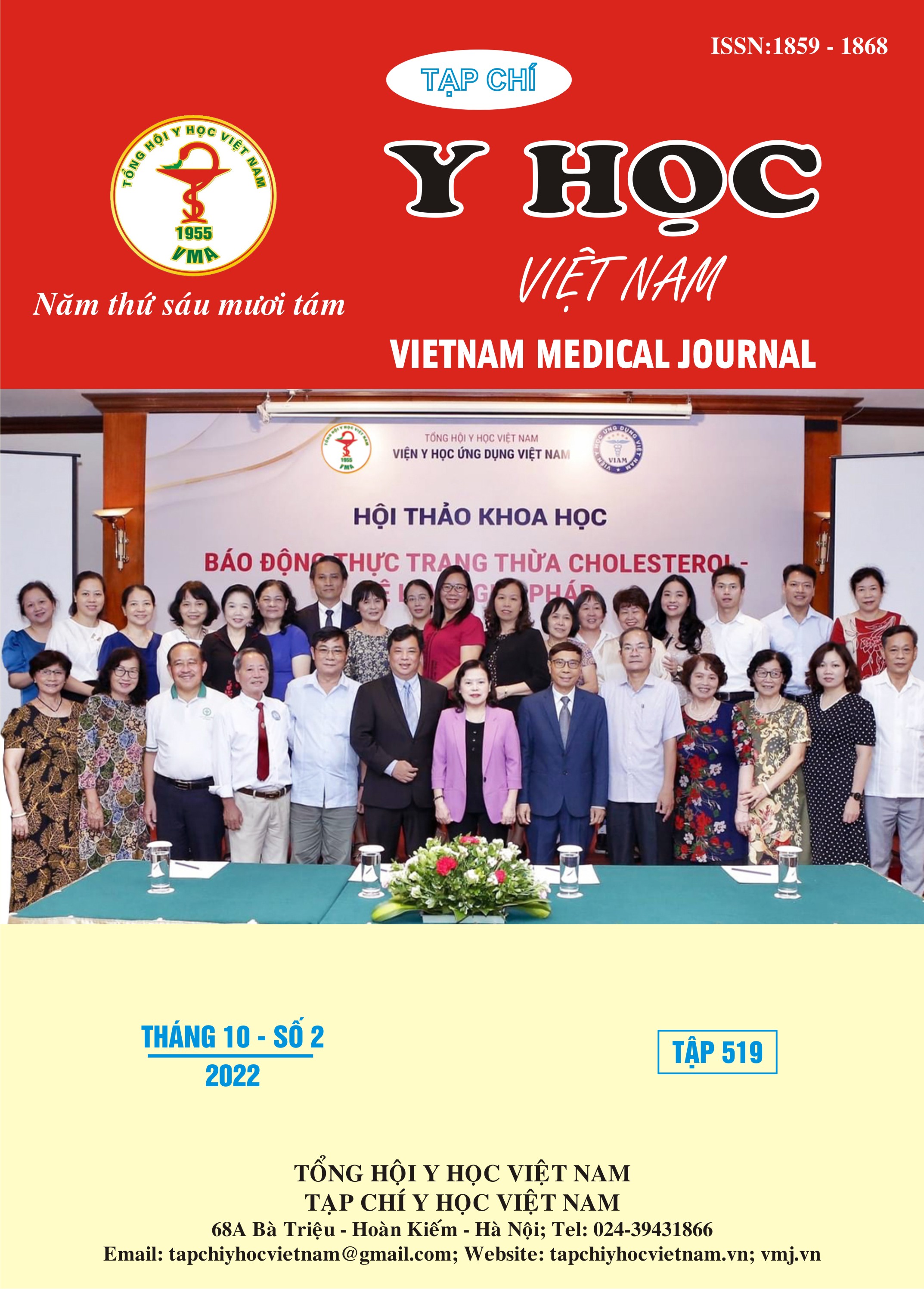CLINICAL CHARACTERISTICS, DIAGNOSE AND TREATMENT RESULTS SURGERY OF INTESTINAL OBSTRUCTION CAUSED BY PHYTOBEZOAR IN CHILDREN IN NATIONAL PEDIATRIC HOSPITAL PERIOD OF 2017 - 2021
Main Article Content
Abstract
Objective: Clinical characteristics, diagnose and treatment results surgery of intestinal obstruction caused by phytobezoar in children in National Pediatric Hospital period of 2017 – 2021. Subjects and methods: This is retrospective, descriptive study including all the cases of post-operative diagnosed with intestinal obstruction due to phytobezoar from January 2017 to June 2021 in National Pediatric Hospital. Results: 40 cases of bowel obstruction caused by phytobezoar, consisting of 17 males and 23 females. Patient’s age: 7 and 10; male/female percentage: 1.3/1; common clinical symptom was abdominal pain (92.5% of all cases), 75% cases was fluctuating pain; vomiting (95%), 74% cases was yellow fluid. The clear image of bowel obstruction on x- ray was 85%; on ultra sound was 50%. The essence of sub-acute development shows through extent variation of clinical symptoms and subclinical images. 13/40 treatment using laparoscopic tools was impossible; there was a small incision in the upper of umbilical performed instead. The obvious signs of bowel obstruction during an operation were 100%. Phytobezoar located in ileum was the most common case (77.5%). Treatment: push phytobezoar into colon in most of the cases (85%), the rest was opening the stomach (12.5%) and opening the small bowel (2.5%). 13 cases of laparoscopic operation, the treatment was without using laparoscopic tools, but with the help of a small incision in the upper of umbilicus. The result of treatment in early time is good. The duration of gas after surgery is 2.03±0.15 days; and staying in hospital after surgery is 4,72±0.28 days. Complications: 2 cases of infection on wounded and 3 cases of enterocolitis. They were not severe and did not need emergency operation. Conclusions: Obstruction caused by phytobezoar in children is a mechanical obstruction disorder-taking place from inside of the gastro-intestinal tract. Clinical symptoms and image diagnostics differ in the observation process, showing sub-acute essence of the disorder. Most common injury treatment was pushing phytobezoar into colon, which gave good results in early time. Laparoscopic operations still need to be examined and improved.
Article Details
Keywords
Intestinal obstruction, phytobezoar
References
2. Đinh Ngọc Dũng, Vũ Mạnh, Hà Văn Quyết (1995), "Nghiên cứu về chẩn đoán và điều trị tắc ruột do bã thức ăn tại một số bệnh viện lớn ở Hà Nội", Luận văn Thạc sỹ.
3. Dikicier E, Altintoprak F, Ozkan OV, Yafmurkaya O, Uzunoglu MY. (2015), "Intestinal obstruction due to phytobezoars: An update", World J Clin Cases. 2015 Aug 16. 3(8): 721-6.
4. Yakan S, Sirinocak A, Telciler KE, Tekeli MT, Denecli AG. (2010), “A rare cause of acute abdomen: small bowel obstruction due to phytobezoar”, Ulus Travma Acil Cerrahi Derg. 2010. 16:459–463.
5. Hà Văn Quyết, Nguyễn Đình Hối (1982), "Hình thái lâm sàng u bã thức ăn (phytobezoar) nằm trong đường tiêu hóa", Ngoại khoa, IX(1): 1-5.
6. A.P Emerson. (1987), "Foods high in fiber and phytobezoar formation", Am. Diet-Assoc, 87(12): 165-7.
7. Hà Văn Quyết và cộng sự (1994), "Tắc ruột do bã thức ăn", Hội nghị Ngoại khoa cấp cứu bụng và cơ quan vận động (các tỉnh phía Bắc) – Hà Nội, 34.
8. Robert Wyllie, Jeffrey S. Hyams, Marsha Kay (2015), "Pediatric Gastrointestinal and Liver Disease, Bezoar", 341.
9. Bùi Thu Hương (2005), "Nghiên cứu đặc điểm lâm sàng, cận lâm sàng u bã thức ăn ở trẻ em tại Viện Nhi từ 1995-2000", Luận án Chuyên khoa cấp II – Trường ĐHY Hà Nội.


